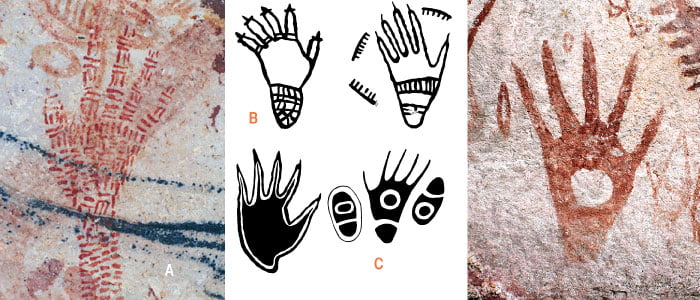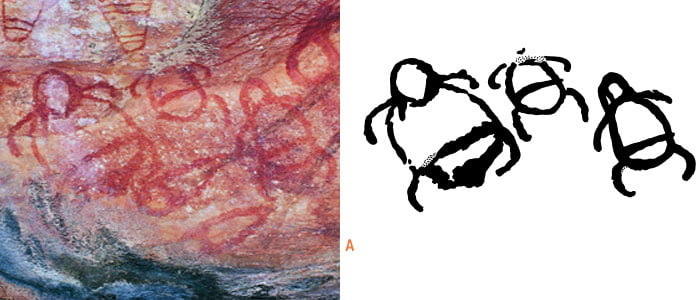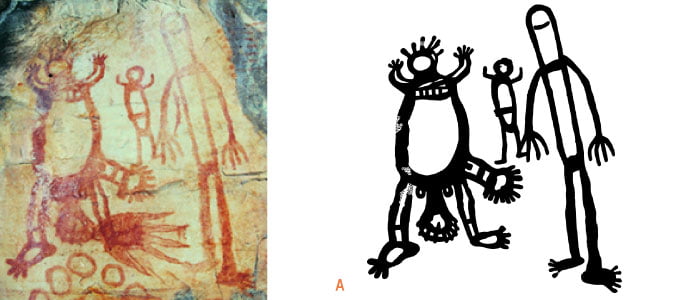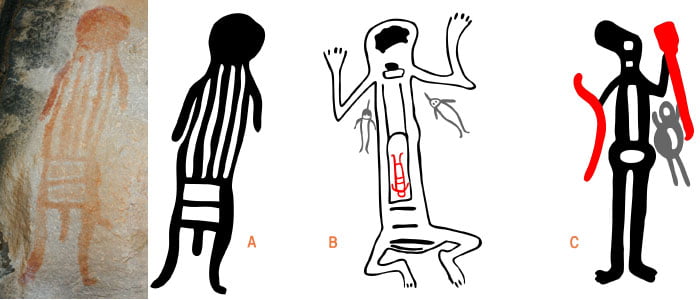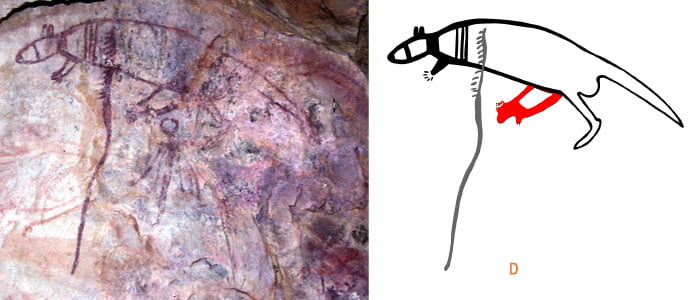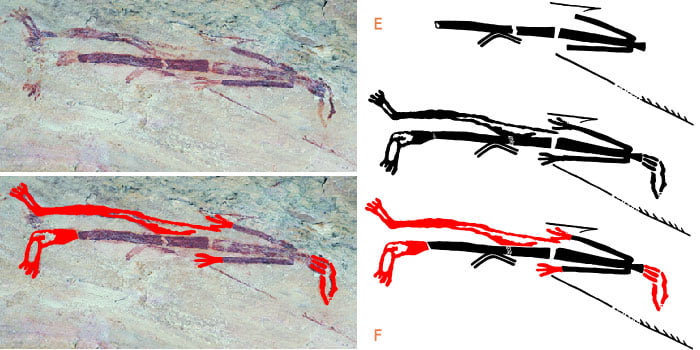The below text and images are taken and adapted from Grahame L. Walsh’s 2000 publication, Bradshaw Art of the Kimberley.
Clawed Hand Period (Painted Hand)
The Clawed Hand Period of the Aborigine Epoch is basically believed to postdate the Last Glacial Maximum.
The Clothes Peg Figure Period appears to come to a relatively abrupt artistic ‘end’ and, with it, the end of the Erudite Epoch. Many of the schematic CPF forms seem to end in their most sophisticated forms, presumably at the peak of their development, with no evidence whatsoever suggesting a transition of form, deviation of technique, or changed direction of theme. The abrupt end of the Erudite Epoch remains equally as mysterious and fascinating as its sudden appearance.
The earliest following artistic works superimposing the CPF involve motifs so totally alien in all respects that it is difficult to imagine that they originate from the same country, much less the same geographic region. There is little problem in identifying the later art forms, which collectively involve broad brush strokes, which at best could be termed a very ‘naive’ form. The fine brush strokes of obviously accomplished artists, portraying figures with clearly intimate understanding of muscular form, vanish forever from Kimberley rock art. This undoubtedly heralds the commencement of an easily identified and remarkably dramatic artistic change, which has been termed the Aborigine Epoch: the final art epoch of the Kimberley.

